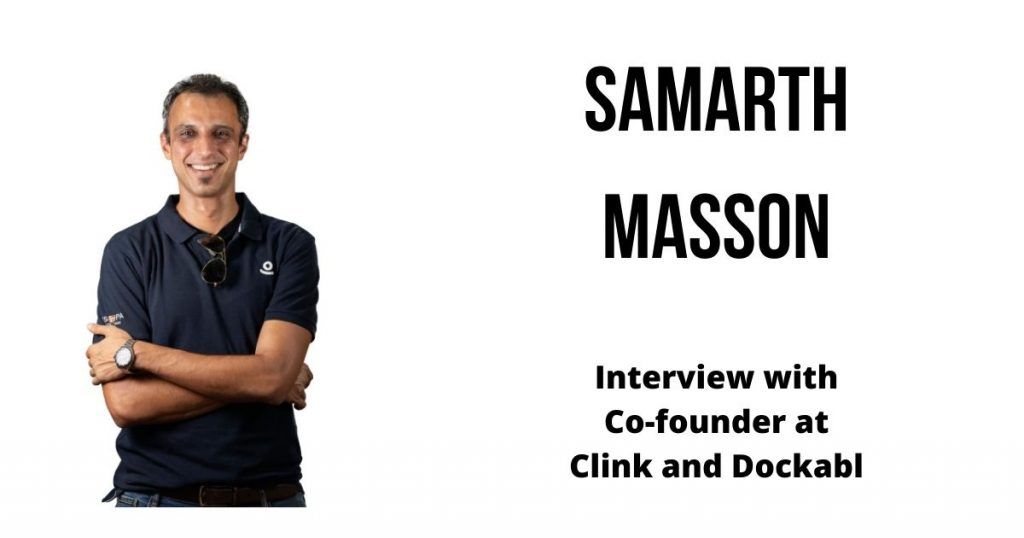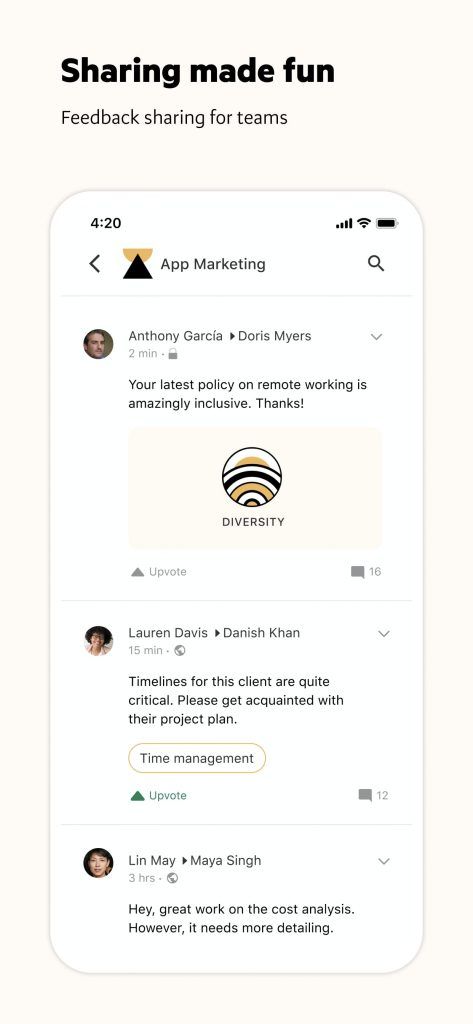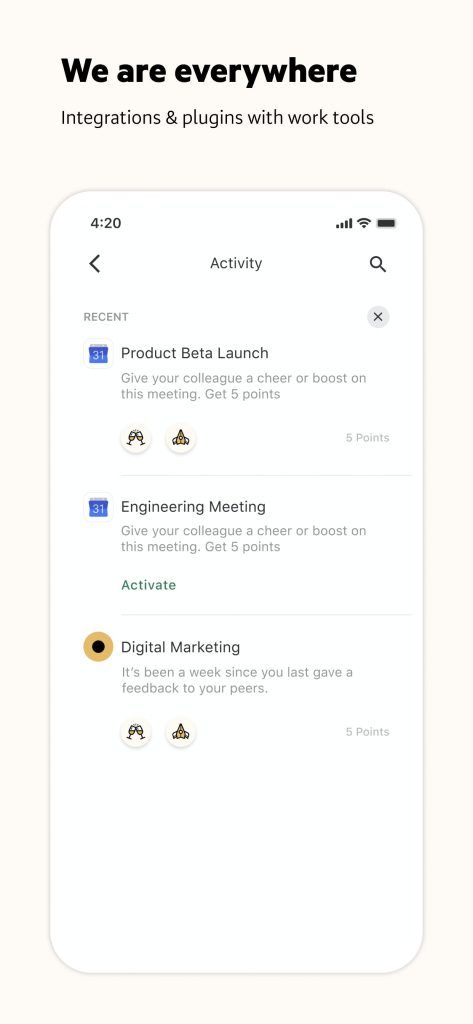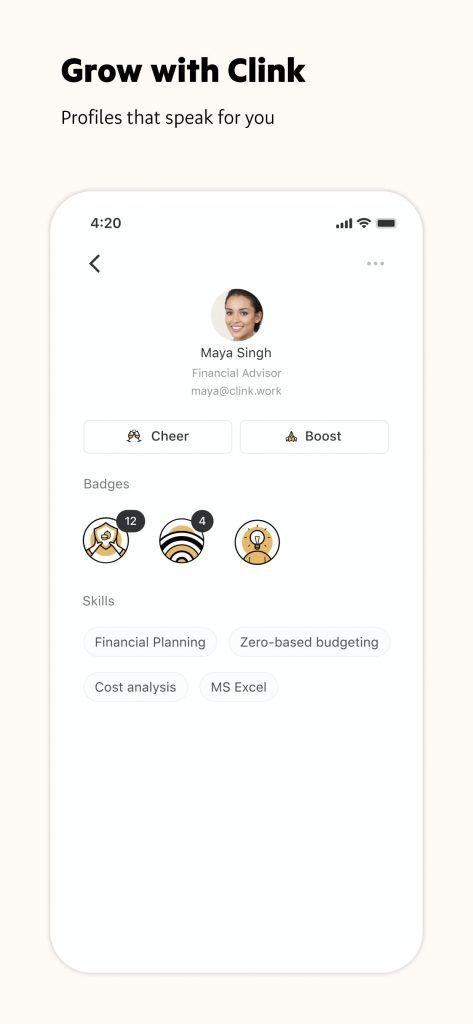Six months back, who’d have thought that remote work would have become a norm and not an exception? But with employees working remotely, the feedback has become an important aspect since it wasn’t a big issue when everyone was working together in a workplace environment. And more importantly, real-time feedback, rather than monthly / quarterly which becomes more formal, and is connected to appraisals and KPIs.
Enter Clink, a new-age employee engagement software designed specifically to cater to this use case, and launched by the company behind Dockabl, a performance management system. The product went public just a couple of weeks back after months of pilots and testing. We caught up with Samarth Masson, co-founder to understand why the company decided to launch a separate product altogether, how it competes against the rivals, and the roadmap.
PS: the interview has been edited for the sake of brevity.

Table of Contents
1) Before we begin talking about Clink, can you tell us about your journey into the world of SaaS?
Mr Samarth stated that “I started my career as a consultant in the HR industry, and that’s why I’m so passionate about this sector. After various stints, I founded CognitoHub (formerly FutureQuest Consulting), an education consultancy and technology firm in 2013. I started Dockabl in April 2017, and launched it publicly in May 2018. It’s a performance management system that aims to help organizations with employee engagement and feedback, along with providing actionable insights. Over the next couple of years, we raised $1.2million, acquired 30 customers that include the likes of AirBnB India, Bajaj Capital, and Rentomojo. Then we noticed the gap that many companies don’t want to go through complicated HR policies for implementing a system like this and that’s what gave us the insight to launch a mobile-first, easy-to-use feedback app dubbed Clink. We started building it in October 2019 and launched it commercially in July 2020.“
2) You’ve been working in the performance management space for a long time, first with Dockabl and now with Clink. Can you tell us about why you think this an important area?
He shared that “we came up with the idea of building Dockabl and Clink to solve the problem of performance and feedback in an organization being biased, expensive, not objective and sometimes unfair to employees.“
Listing various issues that Dockabl and Clink intend to solve, he mentioned:
1. Appraisals continue to be a once-a-year activity prone to over-dependence on manager’s feedback, recency biases, long and complicated form filling, dated frameworks such as the bell curve, and lack of multi-stakeholder perspective on the employee’s feedback and ratings.
2. With most organizations transitioning to remote working, employees will need a communication channel dedicated to feedback. This channel plays a key role in employees staying engaged, motivated, and connected. Business heads, CEOs, and HR will need software, which can help them get relevant data on employee performance & feedback across various clusters of project teams.
3. Team members have a strong need for receiving constructive feedback and recognition from the ecosystem they operate in.
4. Feedback at work is scattered across various platforms such as emails and chat messages, the customer requires feedback curated in once place that can be used for performance & development conversations.
5. Feedback at work is untimely and out of context. Managers and peers usually end up sharing feedback retrospectively at the year-end appraisal. The customer needs real-time feedback. in the flow of work, which is contextual and can be worked upon instantaneously.
6. Feedback at work is barely actionable, it’s usually a jamboree of comments from various people, prone to their recency biases and individual idiosyncrasies. The customer needs feedback that gives them meaningful insights and key takeaways that can be actioned upon for their benefit.
3) While you already have a Dockabl, what led you to the creation of Clink?

He said that “Dockabl is B2B, top-down driven as it enables OKRs and performance reviews, based on workflows and hence, it’s seasonal in adoption. But we wanted to solve the problem in a manner that performance and feedback becomes a continuous process for teams. Hence, we launched Clink.“
4) Briefly explain the process of creating the app – from understanding user pain points to creating a team, and from doing user testing to its launch. How long did it take and how’s the whole experience been like?
Mr Samarth Masson mentioned that “with Dockabl, we were confronted by three challenges: the adoption was seasonal during goal setting, performance reviews and recognition programmes that were launched in the organization, and sales cycles were long as we were selling to HR heads. There were also too many requests for product customizations.“
Talking about Clink, he told us that “our vision was to build a SaaS product that makes performance and feedback truly continuous. We went back to the drawing board with all the data and learnings from over 30 implementations of Dockabl. We used the Google design sprint framework to set up a product war room in Oct 2019. We then built a prototype and took it to users for initial feedback. All users echoed the need for a tool that enables them to get feedback in context and something that makes performance more objective and in the flow of work. Once we had that validation, we got down to build Clink. We built the MVP (Minimal Viable Product), took it for UAT (User Acceptance Training), and then we finalized the first version of the product and finally, took it to market last month.“
5) What are the salient features of Clink?
Listing down the key highlights of Clink, he said “it’s super easy, fun, and nifty. More importantly, it has an easy-to-use interface that doesn’t require any training. With a gamified approach, to feedback sharing the team gets hooked right away. And using Clink isn’t time consuming either, as ‘Cheer’ & ‘Boost’ framework streamlines constructive feedback and recognition. Then there’s the fact that it has plugins with platforms like Gmail and Slack, which means that one doesn’t need to leave their workspace every time they want to share or save feedback for their colleague(s).“

“That’s not all, the app also comes to your rescue when you need it for your 1:1 conversations & appraisals. And if people feel awkward asking for feedback, then it can be automated with integrations with the likes of Google Calendar and Jira. With the use of NLP and AI, the app gives you accurate and actionable insights. You can now act on your feedback, learn new skill & sharpen old ones. It even gives each user, projects and organization a Work-life score. This score helps determine the health of one’s performance,” he added further.
6) Would Dockabl and Clink continue to co-exist, or at some point, they might merge or evolve together as one service?
He said that “both will exist as separate products. We will build an integration of Clink with Dockabl in the future as well.“
7) How does Clink stand out from the competition?
Showing that they’ve done extensive competition analysis, he shared that “there’s currently no such app in India. HRMS/HCM platforms have their own version of feedback modules, however, these features / products are usually based on the HR workflow of initiating a 360-degree feedback or performance check-ins for the organization at large. There aren’t any employee-centric feedback tools yet.“

Mapping out global competitors, he listed down how they’re similar or different:
1. Impraise: It’s a very HR-driven tool, Clink on the other hand, is very employee-oriented
2. Lattice feedback module: Lattice is an elaborate OKRs and Performance tool, their feedback feature is again extremely top-down driven. While Clink thrives on an employee-centric approach and multiple product integrations
3. TruQu: This comes remarkably close to what we are building in Clink, and they have a really interesting approach to self-assessment
4. Matter: It also comes close to what we are building in Clink, and they have taken an interesting approach to skill-based development, which we are also benchmarking
5. Culture Amp: This is a culture assessment tool with fantastic analytics, we are benchmarking the analytics aspect of the software
6. Going a step further, Mr Masson also highlighted weaknesses of Clink versus competitors, as he said “Feedback as a concept is more evolved in North America, EU than Asia, therefore, no home turf advantage for go-to-market for Clink. We don’t have any web app, though it’ll be developed in the future. The tool isn’t multilingual right now, only offered in English .”
8) What’s your go-to-market strategy?
Clink has a well though-out 360-degree strategy that straddles across online and offline channels, as he highlighted that “for online, we’ll be focusing on email marketing, guest blogging opportunities, podcasts and vlogs, social media marketing, and content marketing. We will also be focusing on integration partners with the in-app marketing, and also plan in-app rewards to add a sticky use case. In case of the offline, the focus would be on network introductions, customer referrals, and channel partners such as Aon and Deloitte along with co-sponsoring HR tech and tech events. Lastly, we’ll focus on omnichannel by ensuring that people on WhatsApp can land on Clink’s landing page when they click on the URL and hence download and onboard the app easily.”
9) Could you share your targets, be it in terms of no of users or organizations or revenue.
Being up front about their user base, Mr Masson broke down their projections as below:
1. July 2020 to Sept 2020: 50,000 users, DAU of 5000, WAU of 10,000, MAU of 15,000
2. Oct 2020 to March 2021: 2,50,000 users, DAU 25,000, WAU 50,000, MAU 75,000
3. April 2021 to June 2021:10,00,000 users, DAU 1,00,000, WAU 2,00,000, MAU 3,00,000
In all the cases, he stated that he aims the retention rate to be 90 percent.
10) What are your favorite SaaS products out there?
Ending the conversation, he mentioned that “there are a lot of SaaS offerings that I like, right from the likes of Slack and Trello, to Hubspot and Zoom. Then there’s Jira, Dropbox, and G suite as well.”






